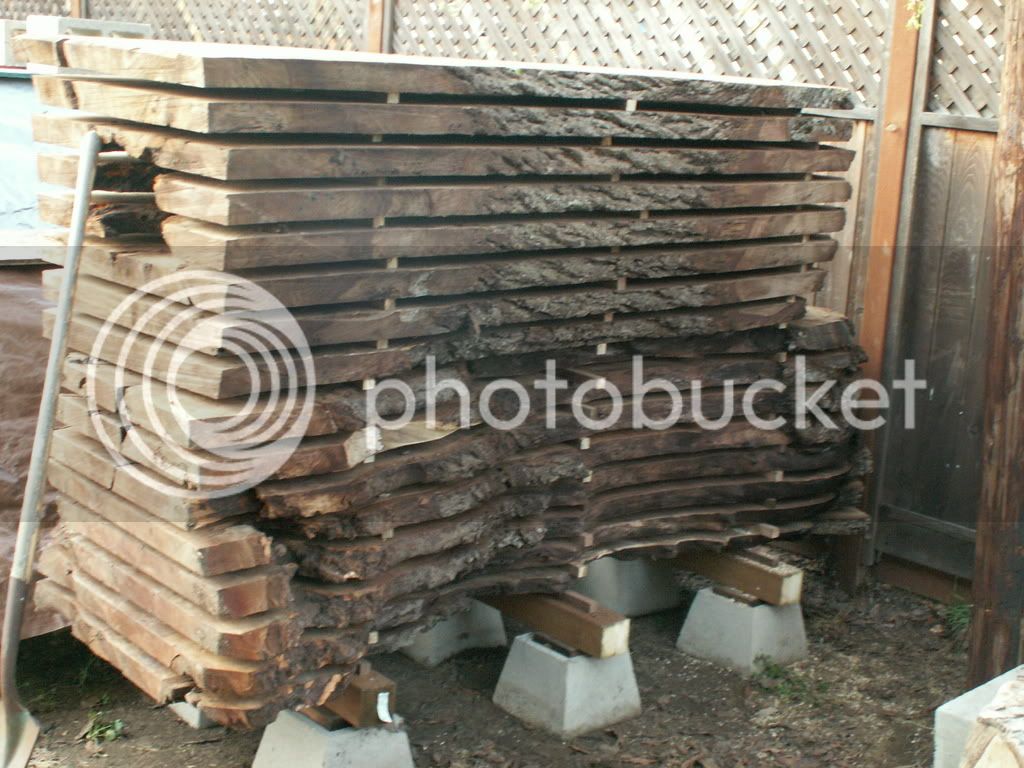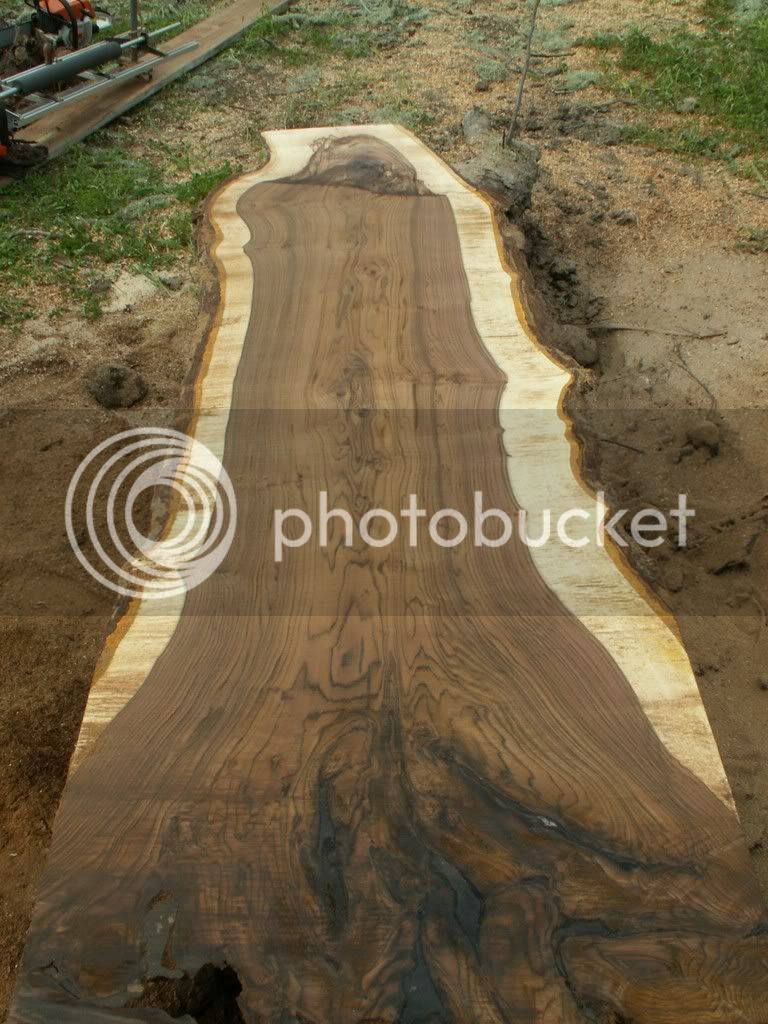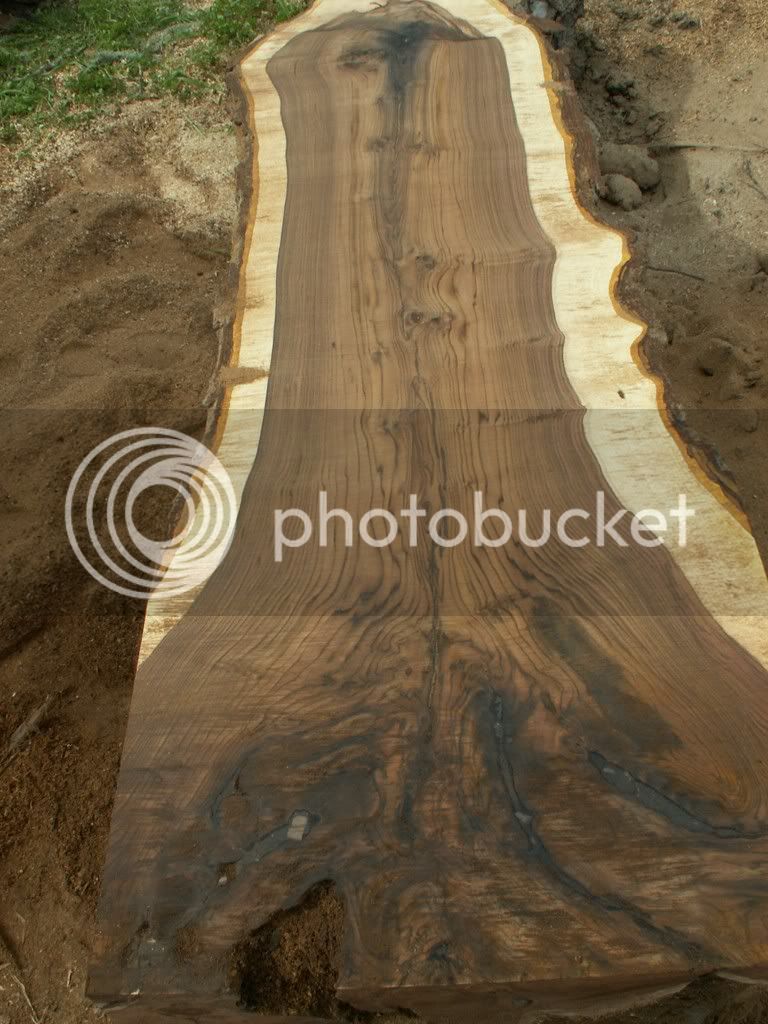BlueRider
ArboristSite Guru
- Joined
- Feb 7, 2007
- Messages
- 550
- Reaction score
- 125
here are some pics of my first day out at a walnut orchard that is being removed. Actualy this is the second phase of the project. the trees are english (juglans regia) grafted onto claro (juglans hindsii) root stock. this orchard was planted in the late 40's and the multiple branches were grafted at the top of the bole. There are about 90 trees that have been removed. Its hard to capture what its like to see all the trees laying on their sides, the scale gets lost in a picture. the first two pics are partial shots of the orchard.
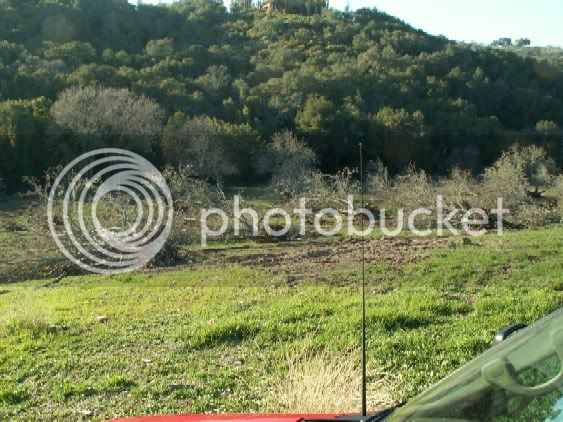
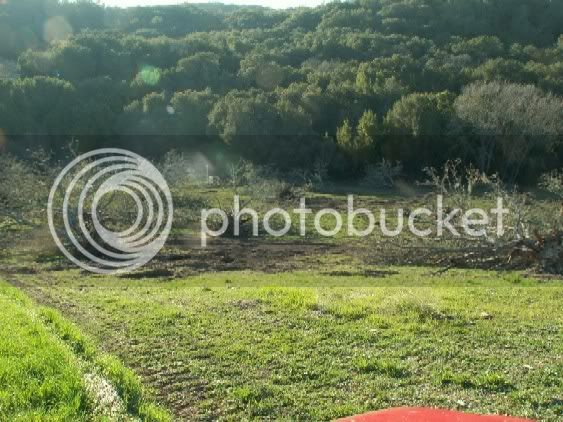
here is a pic of one of the trees laying as it fell after being pushed over by a D3. I didn't measure it but it is probably close to 30" in diameter.
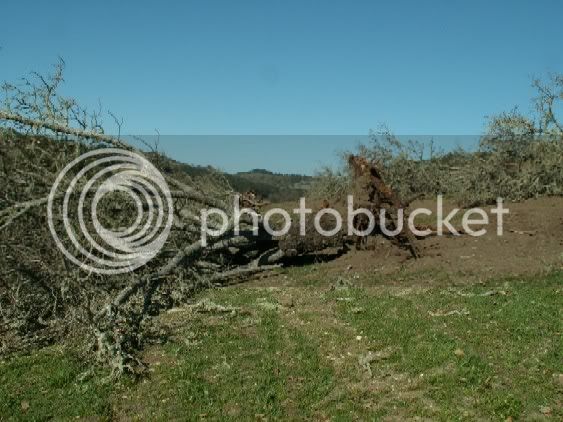
this is the log I tackled today. It takes a bit of time to clear out enough of the braches to make enough room to mill the trunk. I bucked a bunch of the larger libs for firewood but the bulk of the prep time was spent on the root ball. I used a trenching spade to dig as much dirt away from the roots as I could so I could see where to cut to maximize being able to mill as much of the root ball as possible. Almost 1/3 of the length of the log you see in the pic was below ground. I put my mill on the log for scale. The saw is an 051 with a 42" bar and the mill has 48" rails.
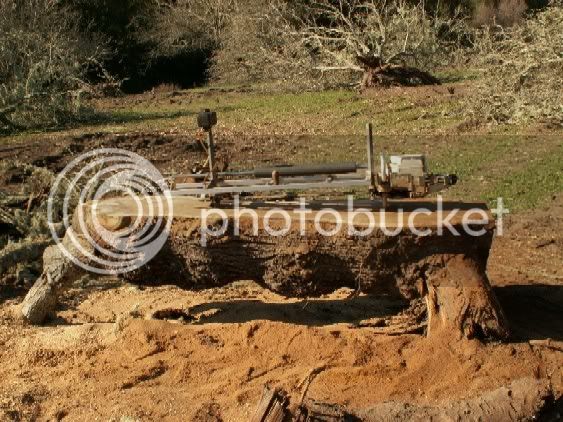
The log is a hair over 8' long and just under 36" at the widest point. I think you can see why I like to mill these with the root ball atached to the bole, it has some of the most spectacular figure in the whole tree.
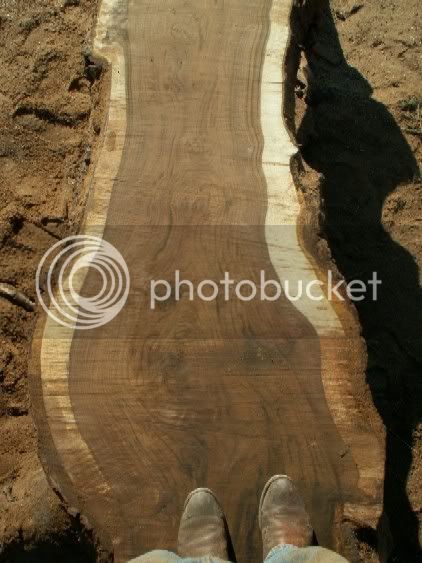
here is a shot of the top part of the bole and the graft lines. the graft line is that dark wavy line in the upper right hand part of the slab. there are several other graft lines in this slab but that is the one that is easiest to see in the pic. As it dries the browns will get a bit darker and richer and that black graft line will fade just enough to make it a bit more refined.
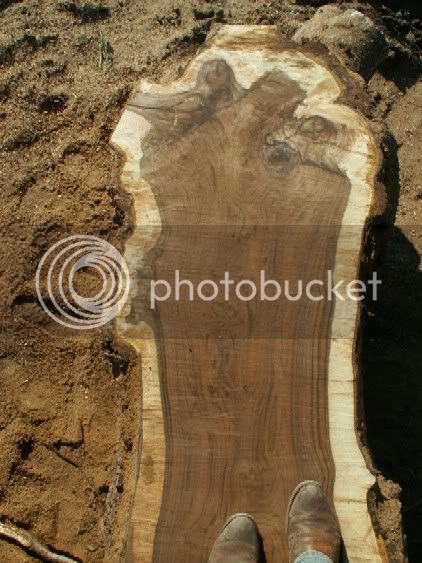
for those that have not clicked away in disgust at my good fortune I would just like to add that the high today was 72* with clear and sunny skies. sorry guys but that is the cross we bear for living in California.


here is a pic of one of the trees laying as it fell after being pushed over by a D3. I didn't measure it but it is probably close to 30" in diameter.

this is the log I tackled today. It takes a bit of time to clear out enough of the braches to make enough room to mill the trunk. I bucked a bunch of the larger libs for firewood but the bulk of the prep time was spent on the root ball. I used a trenching spade to dig as much dirt away from the roots as I could so I could see where to cut to maximize being able to mill as much of the root ball as possible. Almost 1/3 of the length of the log you see in the pic was below ground. I put my mill on the log for scale. The saw is an 051 with a 42" bar and the mill has 48" rails.

The log is a hair over 8' long and just under 36" at the widest point. I think you can see why I like to mill these with the root ball atached to the bole, it has some of the most spectacular figure in the whole tree.

here is a shot of the top part of the bole and the graft lines. the graft line is that dark wavy line in the upper right hand part of the slab. there are several other graft lines in this slab but that is the one that is easiest to see in the pic. As it dries the browns will get a bit darker and richer and that black graft line will fade just enough to make it a bit more refined.

for those that have not clicked away in disgust at my good fortune I would just like to add that the high today was 72* with clear and sunny skies. sorry guys but that is the cross we bear for living in California.





